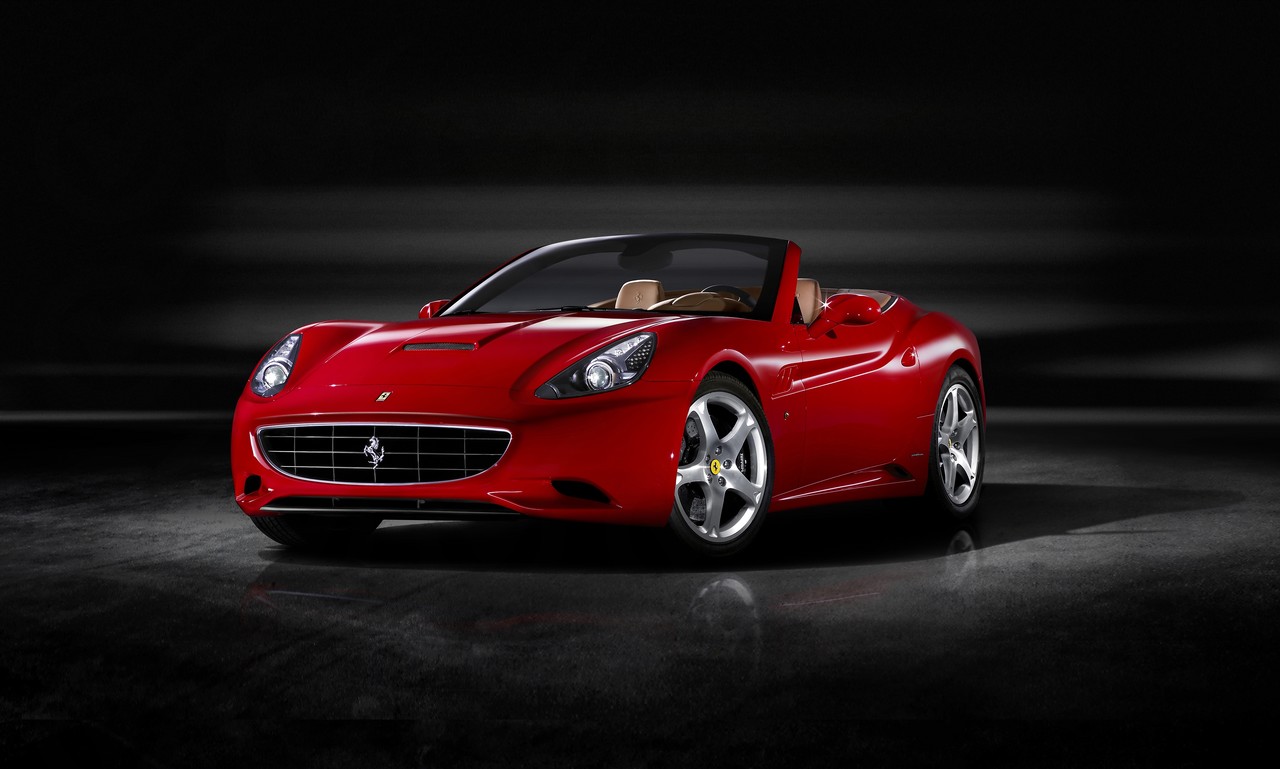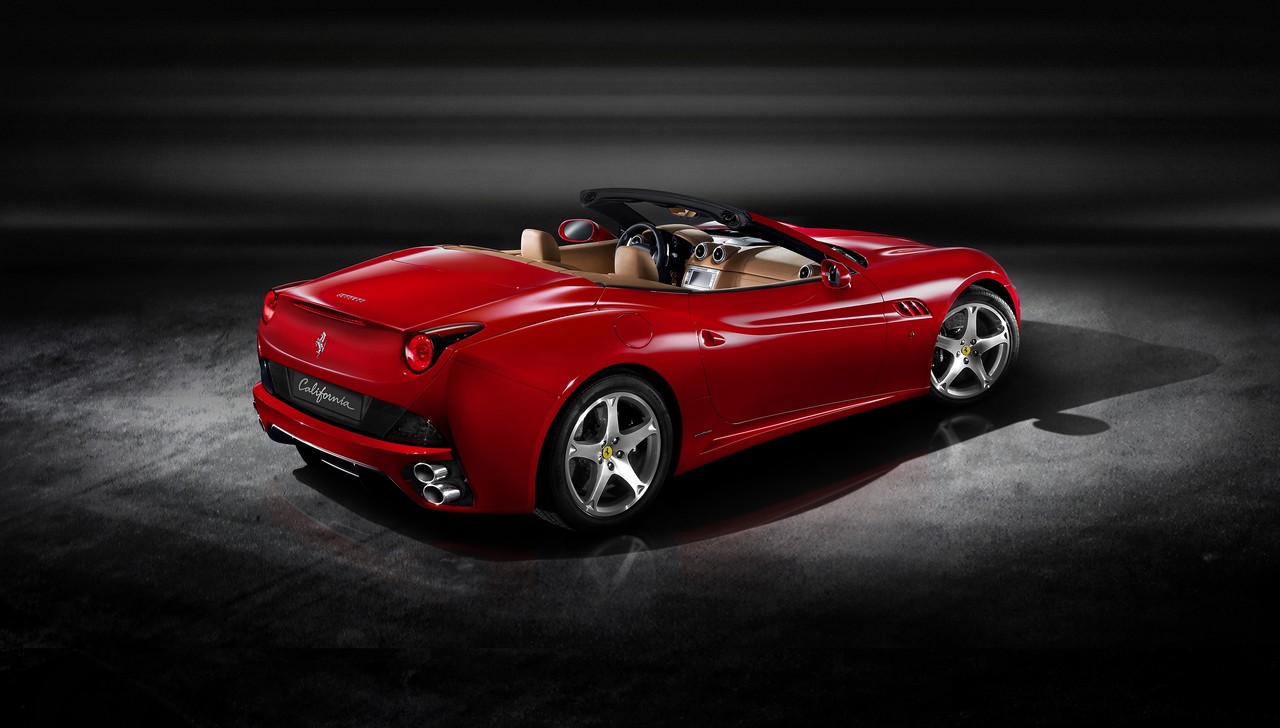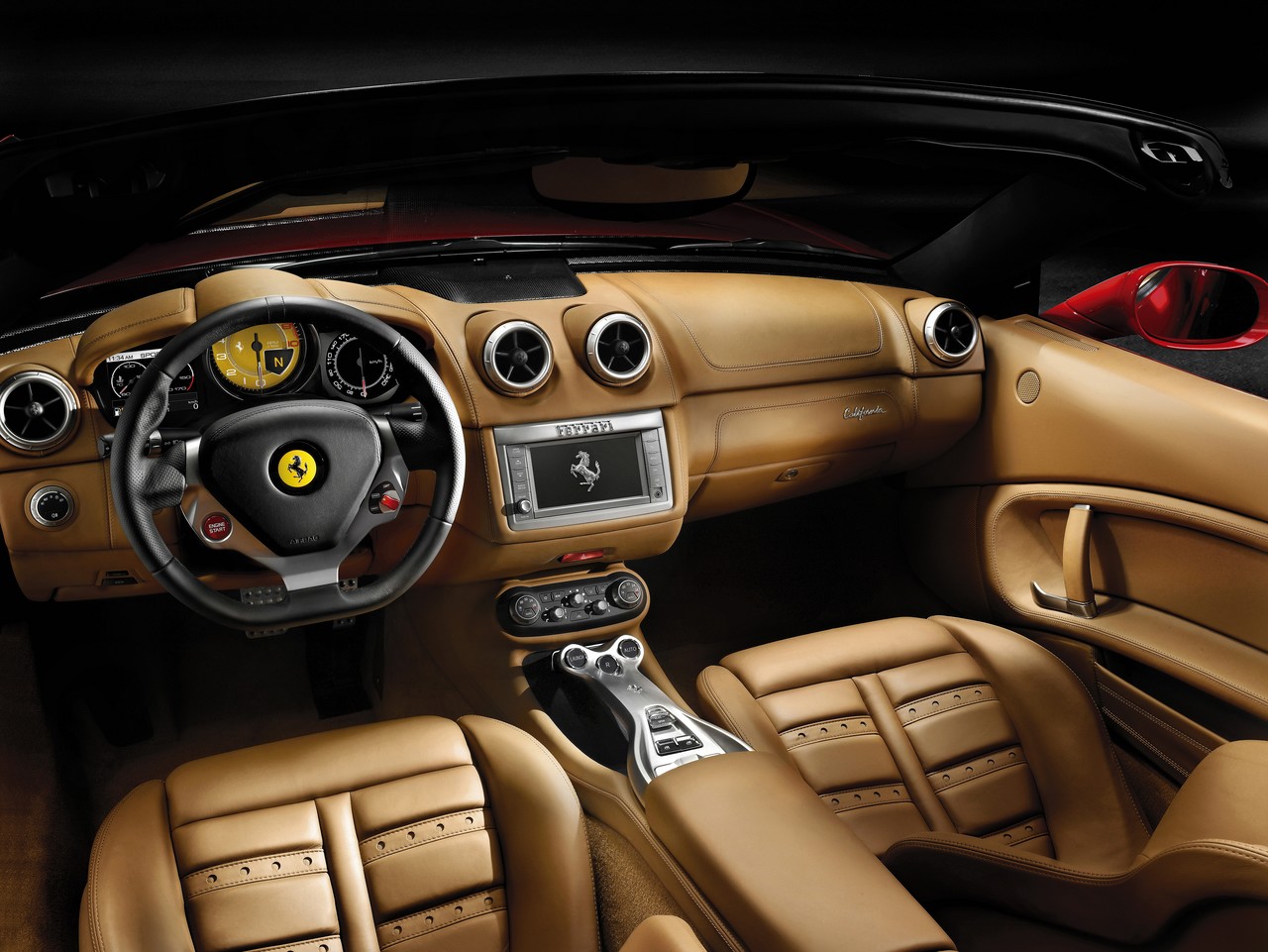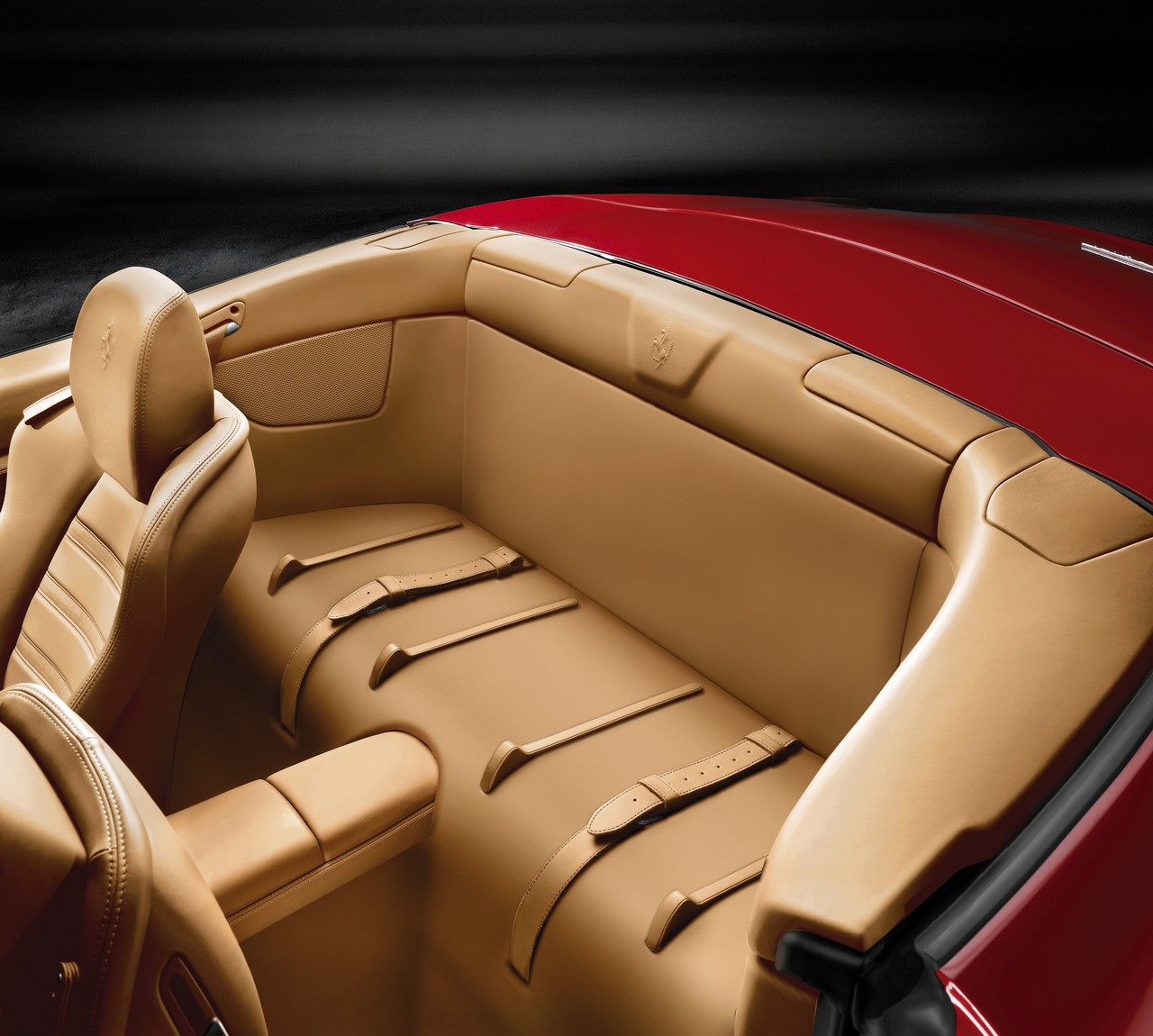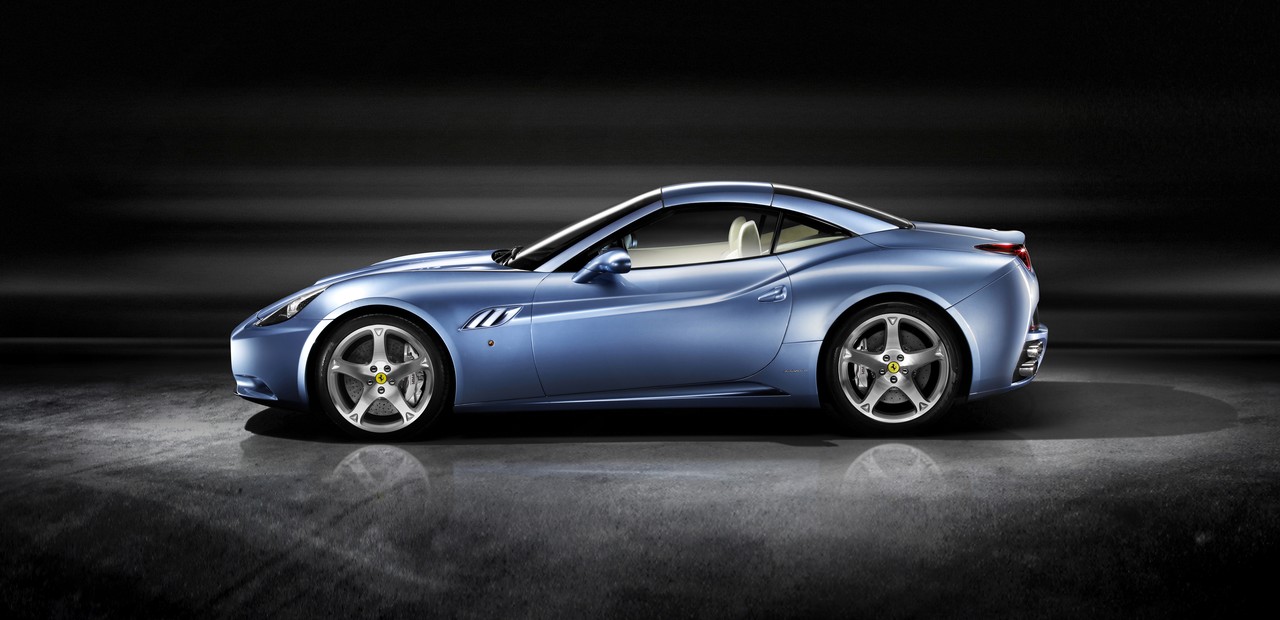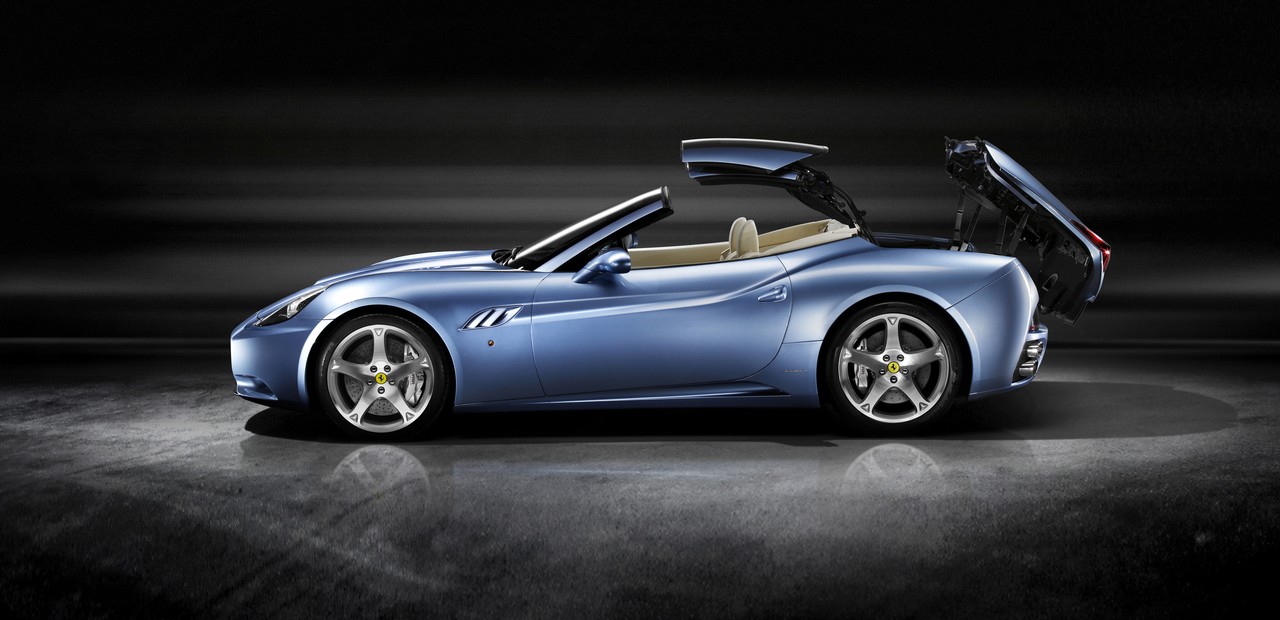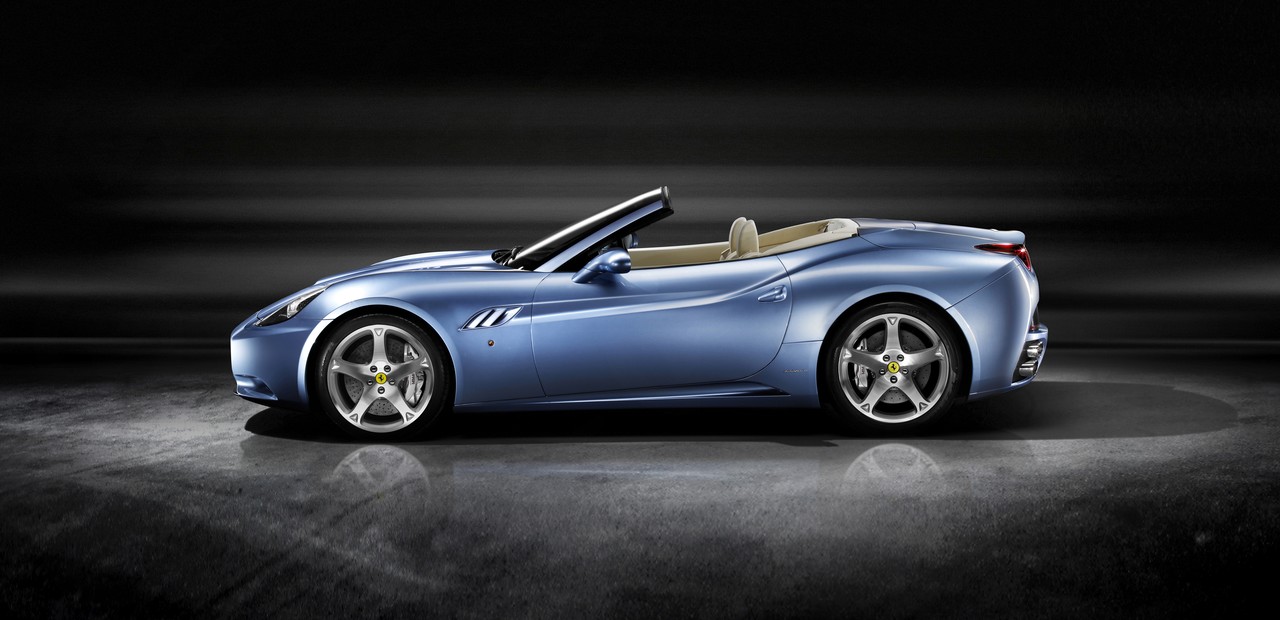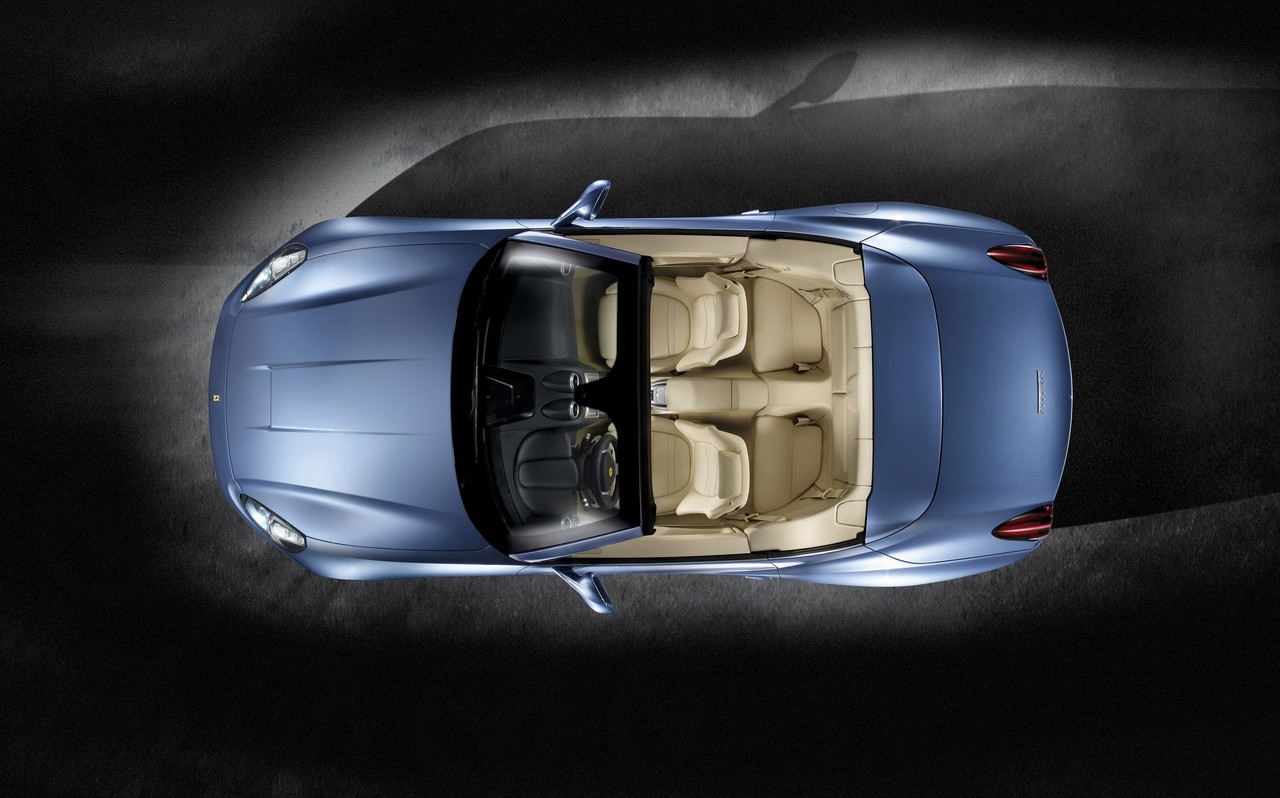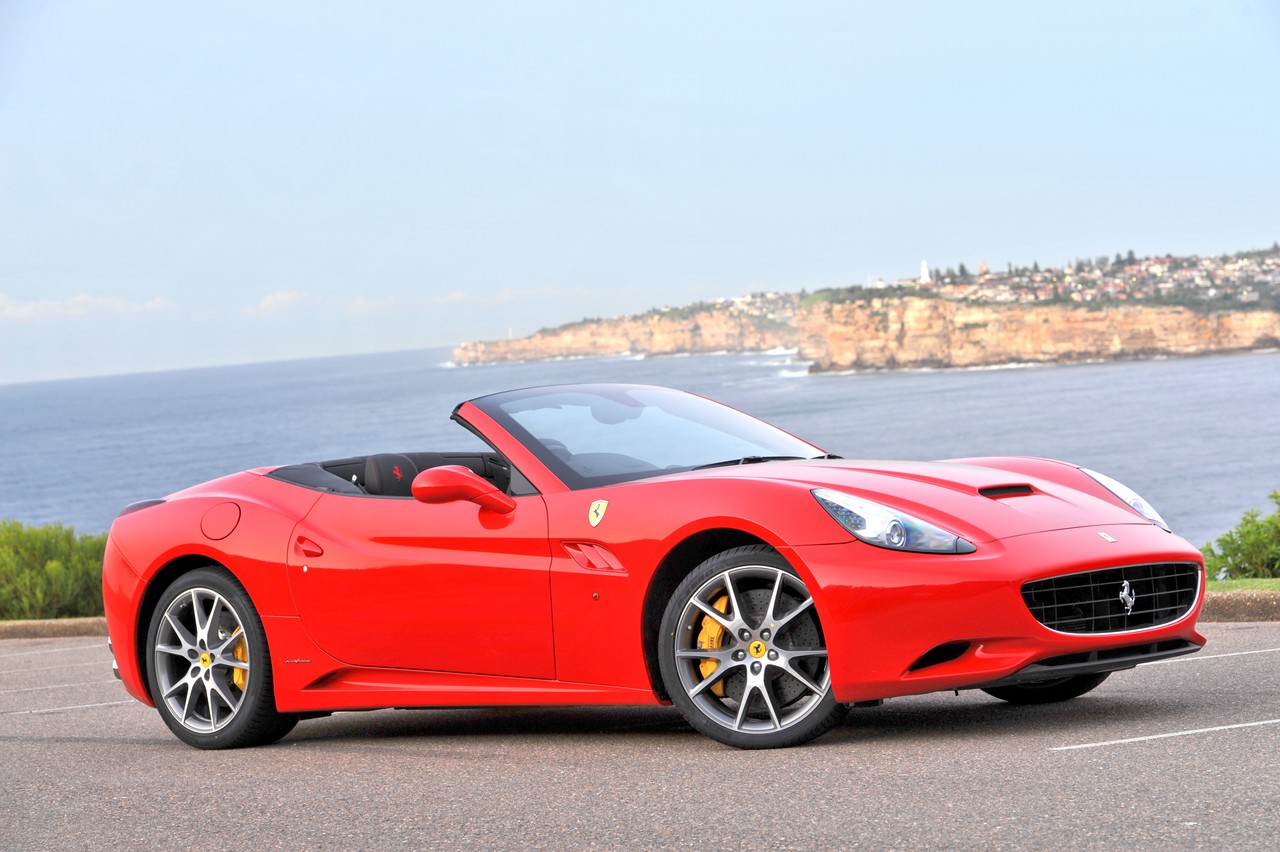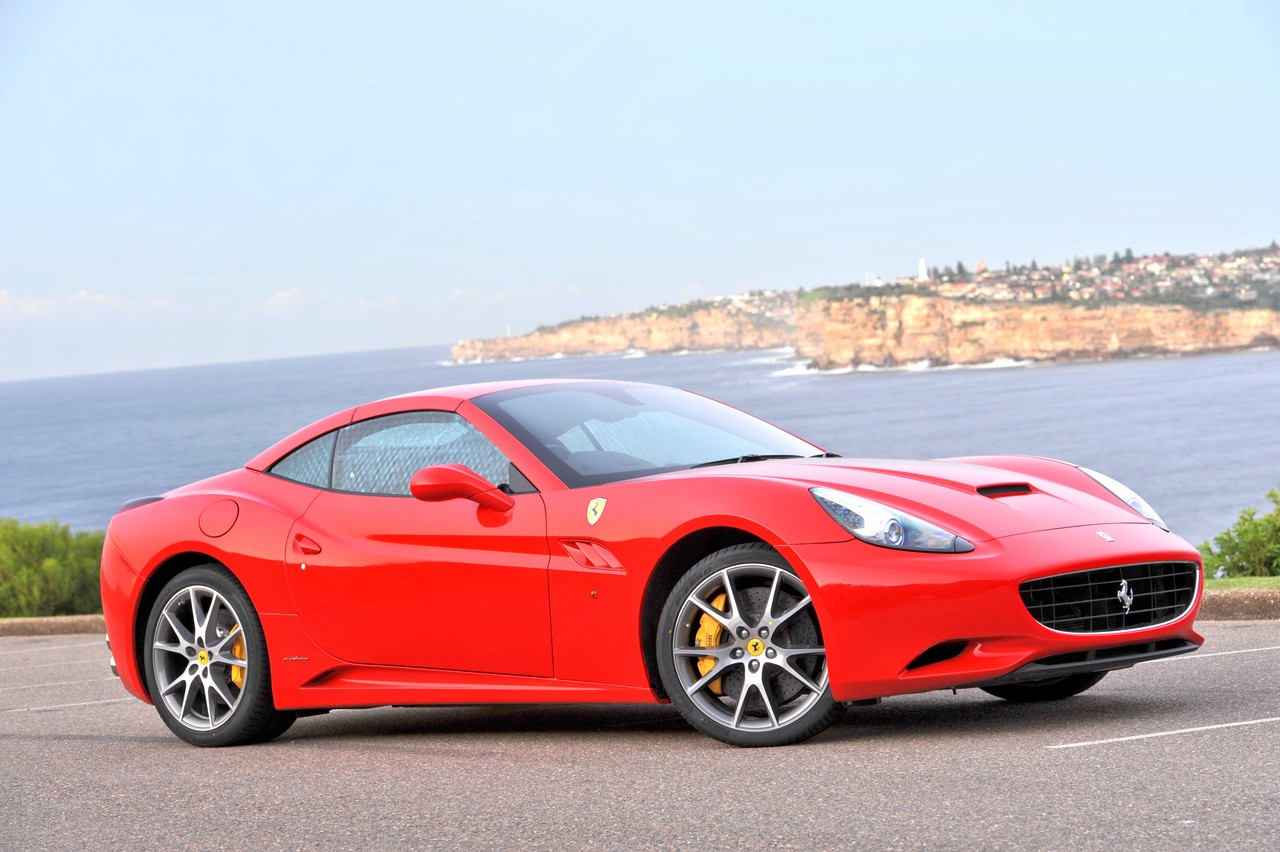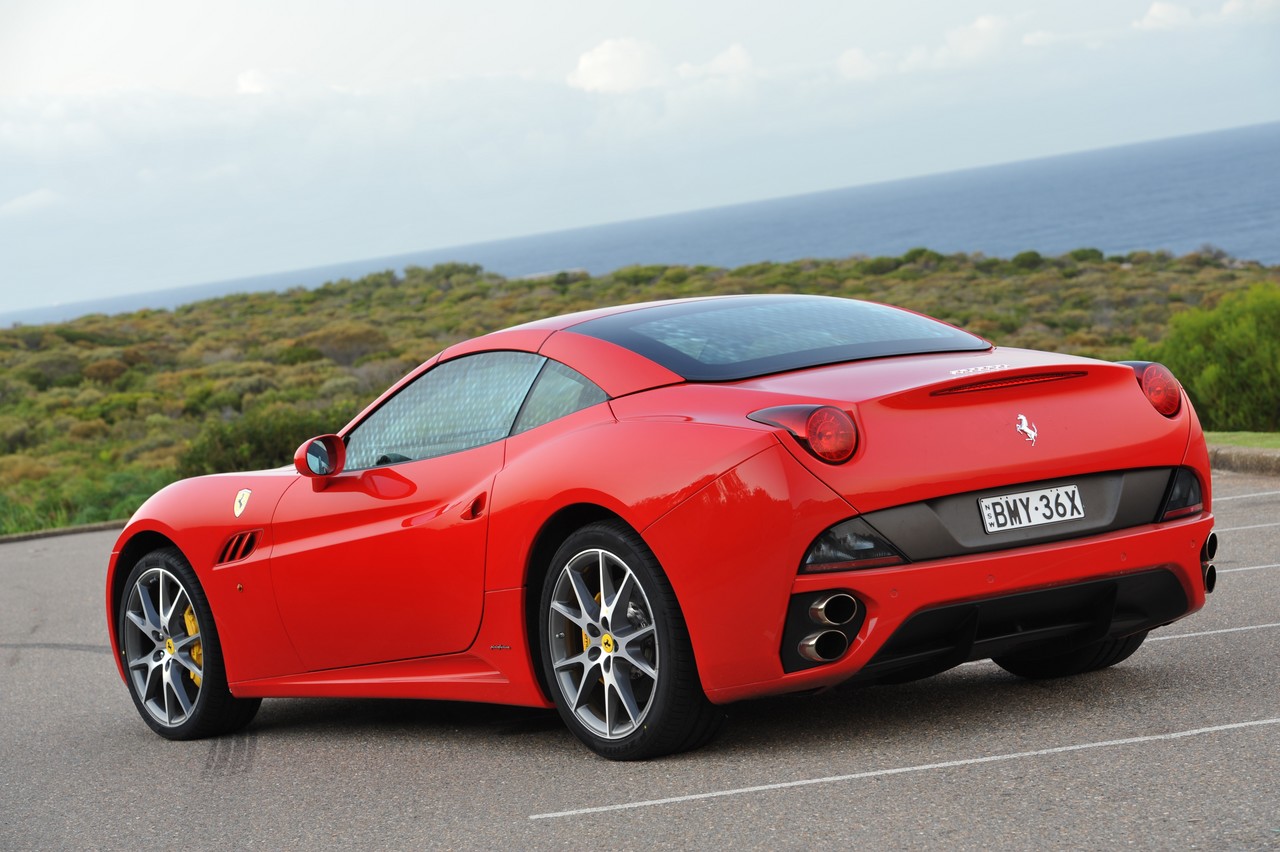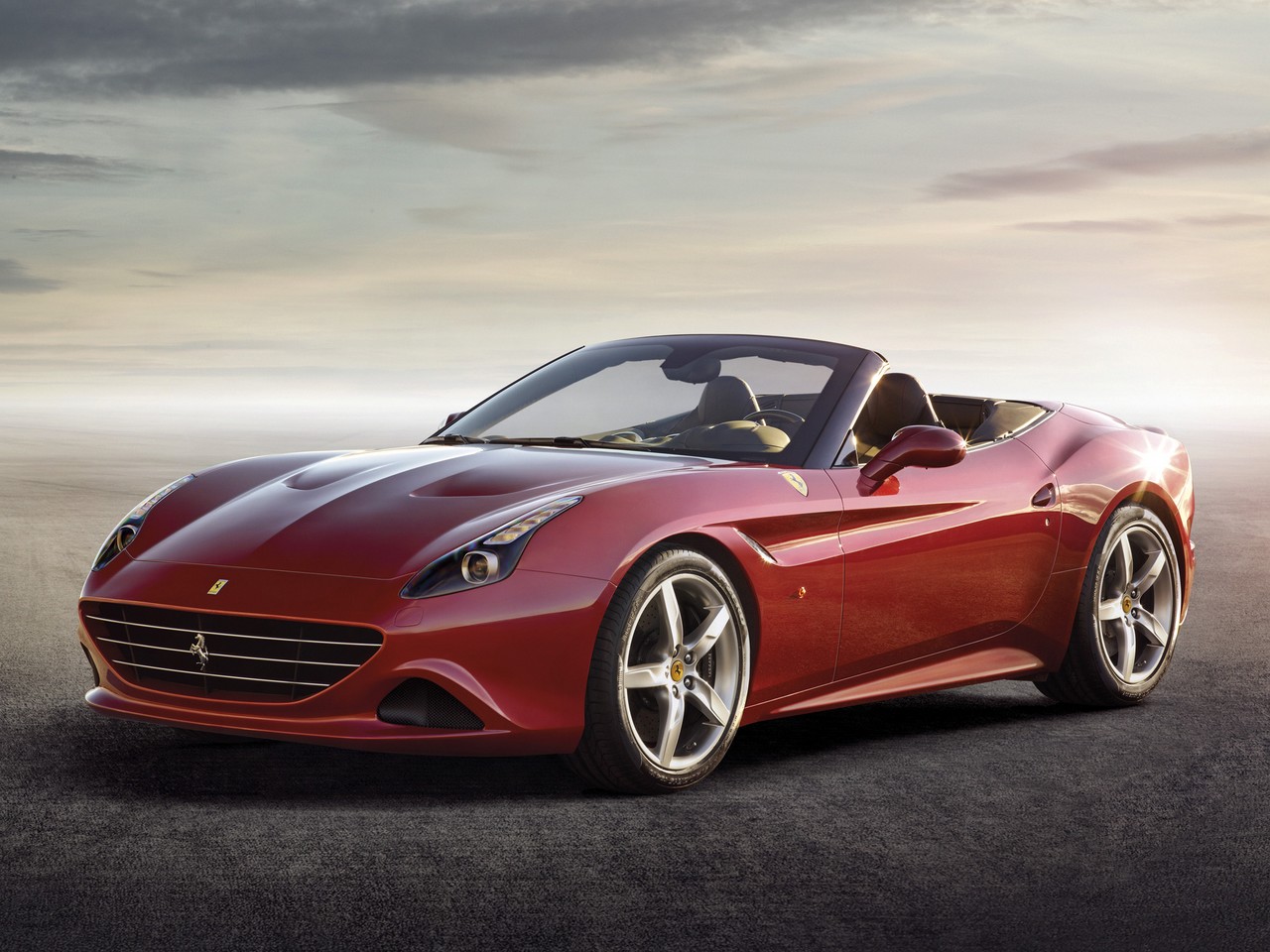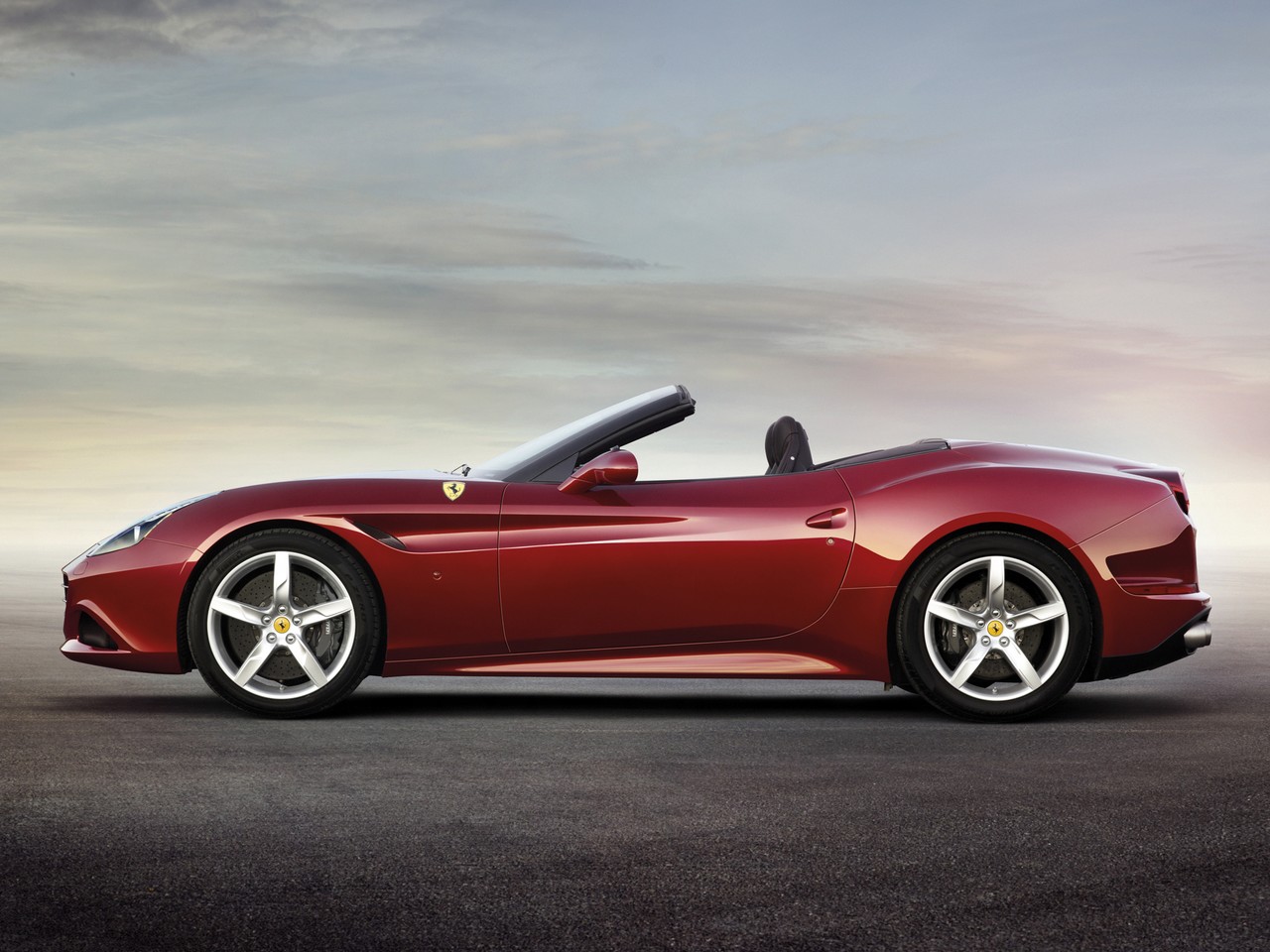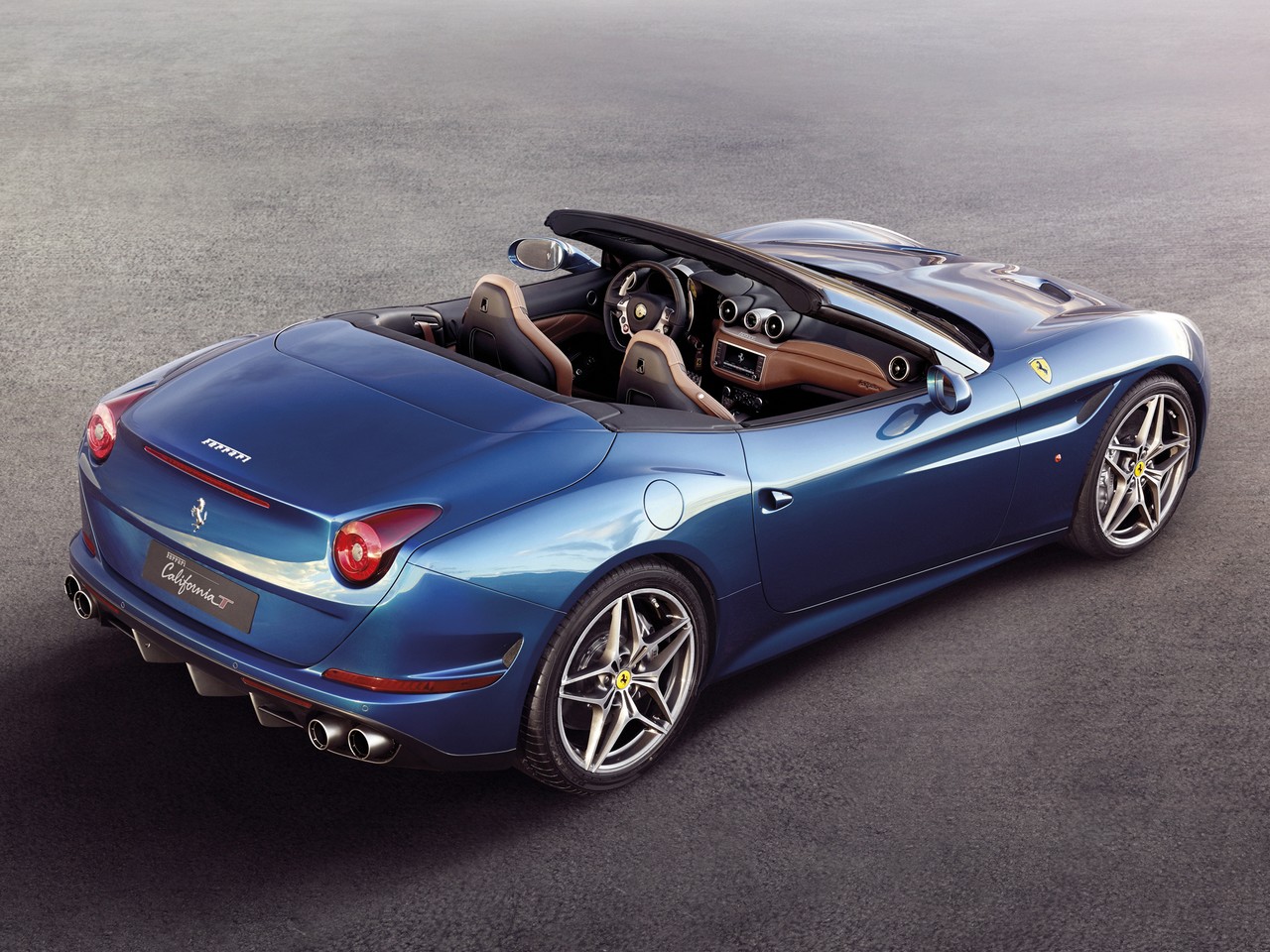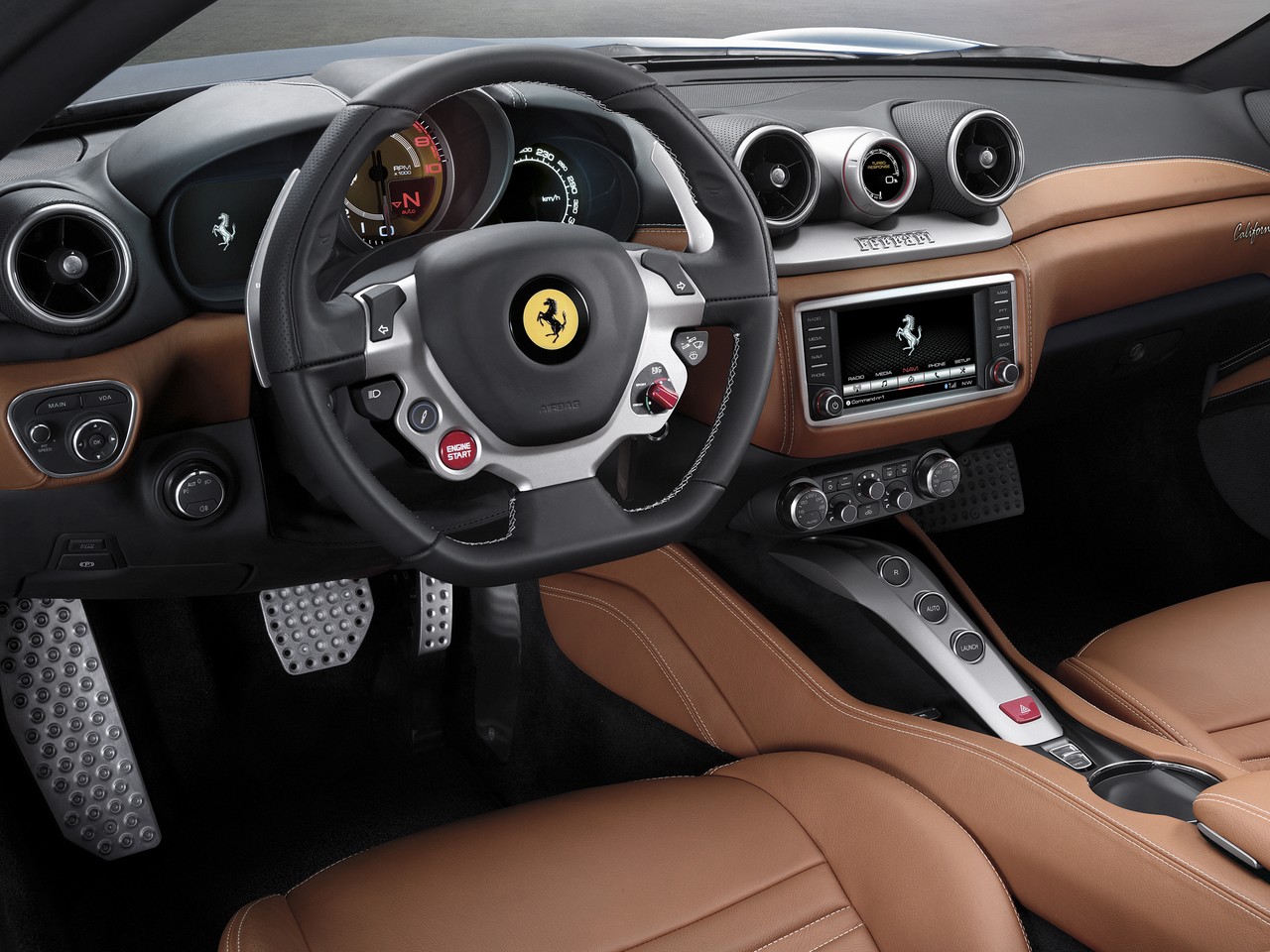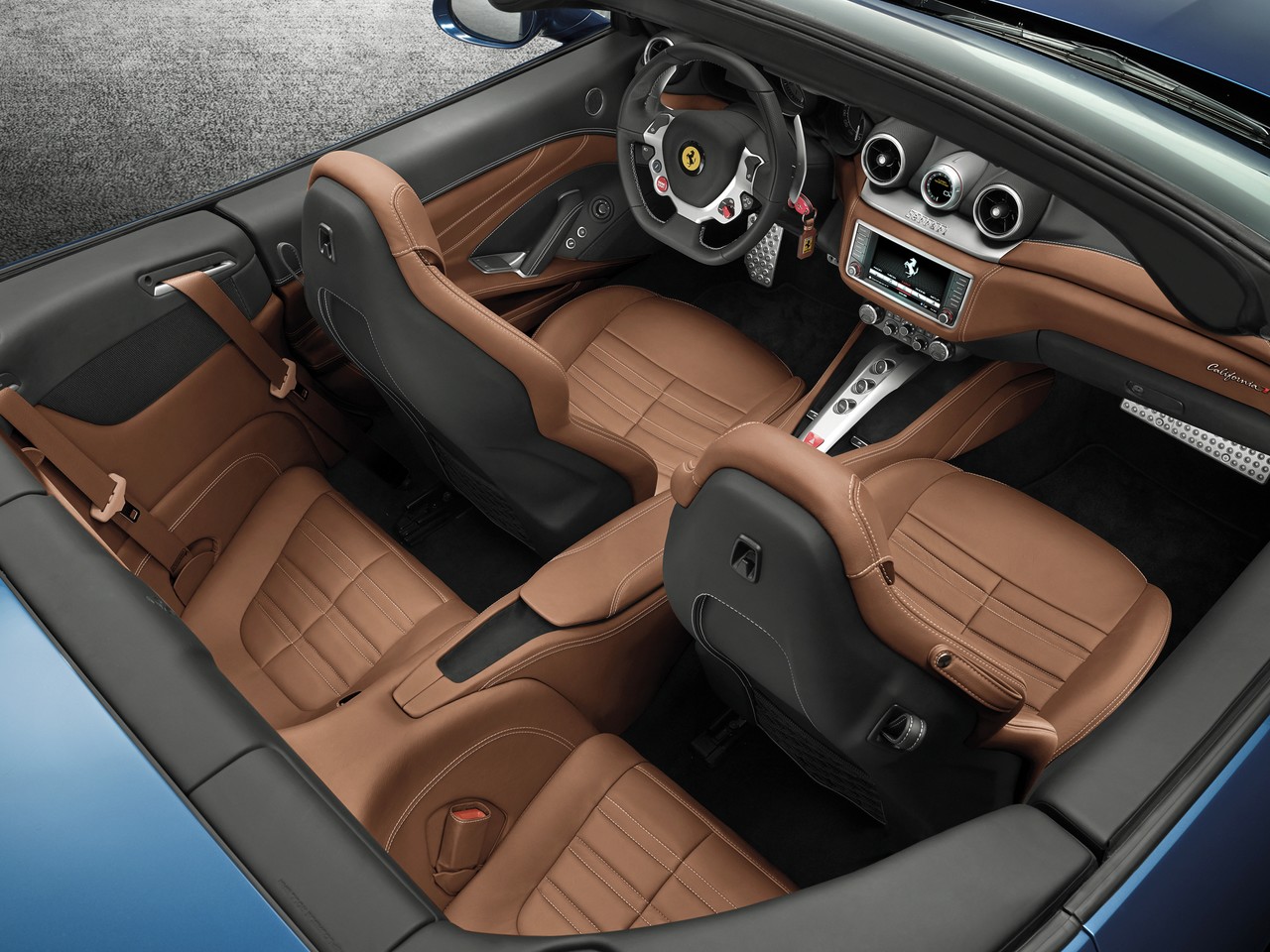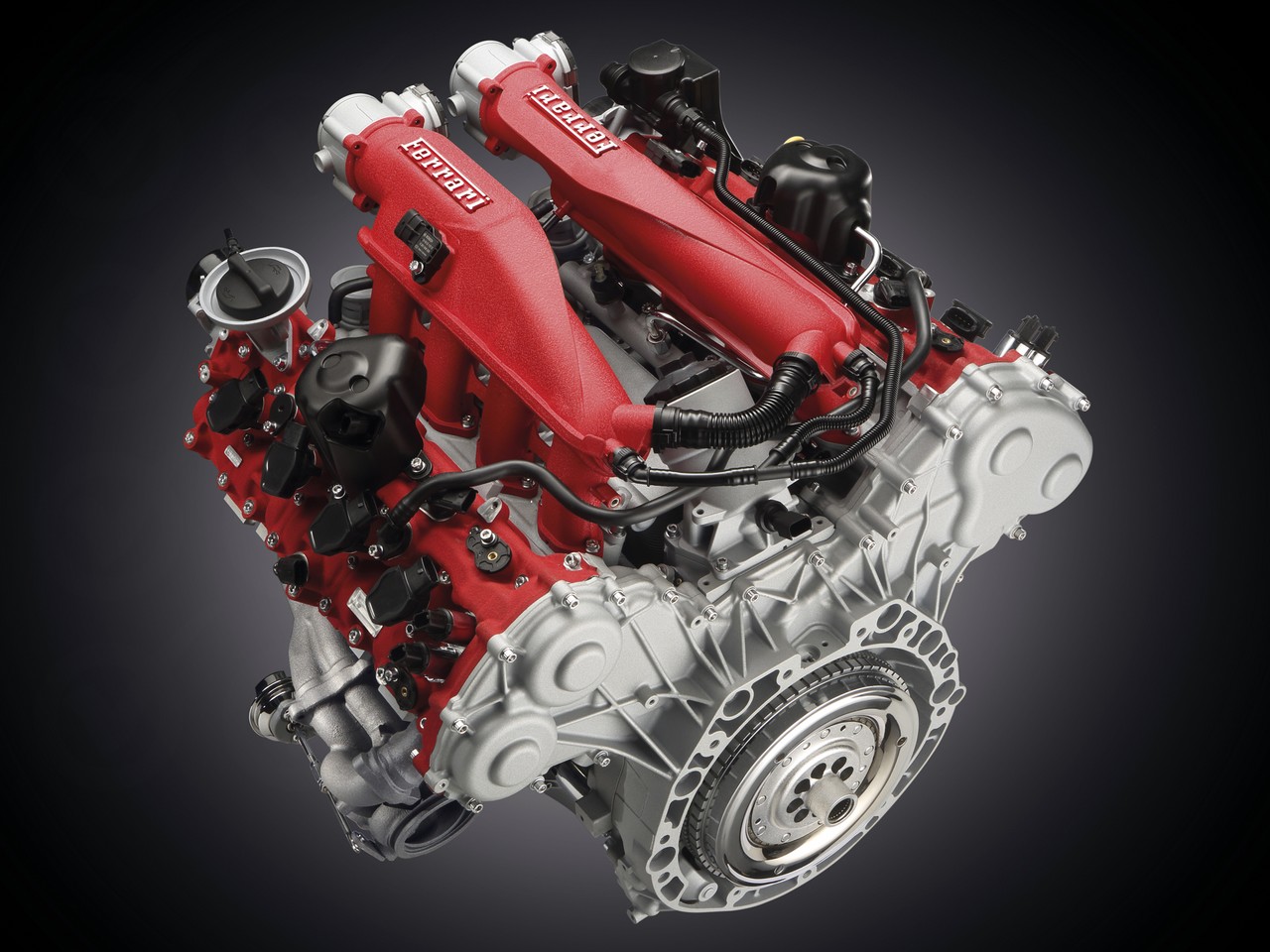
- Free-revving naturally aspirated V8 engine
- Turbocharged engine provide surging torque
- Balanced chassis and impressive handling
- Accurate steering
- For naturally aspirated V8, clunky gearshifts at low speeds
- Poor visibility
- Firm ride
- Disappointing interior ambience
Review: Ferrari F149 California (2009-14)
Overview
Released in June 2009, the Ferrari California was a two-seat convertible with a power-operated, retractable hard-top roof. Manufactured in Maranello, Italy, the rear-wheel drive California was powered by a 4.3-litre direct-injection V8 petrol engine that was mated to a seven-speed dual clutch transmission which could be operated by steering wheel gearshift paddles. The California could accelerate from rest to 100 km/h in 3.9 seconds and had a top speed of 310 km/h.
The California had an aluminium chassis and was 4563 mm long, 1902 mm wide, 1308 mm tall and had a 2670 mm long wheelbase. With its roof in position, the California had a coefficient of drag of 0.32 Cd. In Australia, the California was strictly available as a two-seater with a rear bench (which could accommodate two roller suitcases or golf bags). Furthermore, the power-operated hard-top roof could open or close in fourteen (14) seconds.
The California had double wishbone front suspension and multi-link rear suspension.
2012: Ferrari California update
An updated version of the California was available in Australia from late 2012 which was more powerful due new exhaust manifolds and engine mapping; dry weight was also reduced by 30 kg to 1600 kg. As a result, the 2012 California could accelerate from rest to 100 km/h in 3.8 seconds.
The updated California was also available with a ‘Handling Speciale’ package which included Delphi Magnaride magnetorheological dampers, stiffer springs, a faster steering ratio and a more responsive ECU.
| Engine | Years | Trans. | Peak power | Peak torque | |
|---|---|---|---|---|---|
| California | 4.3-litre petrol V8 | 2009-12 | 7sp DCT | 338 kW at 7750 rpm | 485 Nm at 5000 rpm |
| 2012-14 | 7sp DCT | 365 kW at 7750 rpm | 505 Nm at 5000 rpm |
Safety equipment
Standard safety equipment for the California included dual front airbags, front side airbags, ABS, electronic brake force distribution, brake assist, electronic stability control, traction control (‘F1-Trac’), front seatbelt pretensioners and an automatically deploying pop-up roll bar.
The California had 390 mm by 34 mm front carbon-ceramic brake discs with six-piston calipers and 360 mm by 32 mm rear carbon-ceramic discs with four-piston calipers.
Features
Standard features for the California included 19-inch alloy wheels with 245/40 ZR19 front and 285/40 ZR19 rear tyres, a sound system with CD player, MP3-compatibility, auxiliary inputs (iPod/USB) and hard-drive, climate control air conditioning, leather seats, satellite navigation with a 6.5-inch touchscreen display, voice recognition, Bluetooth connectivity, bi-xenon headlights, a leather-wrapped steering wheel, a folding rear backrest, remote central locking, power windows and heated mirrors, a tilt and reach adjustable steering wheel and immobiliser.
From 2011, the California was available with an optional HELE (‘High Emotion Low Emissions’) option pack which combined an idle stop system with a demand-sensitive fuel pump, air conditioning compressor and engine fans to minimise fuel consumption.
Review: Ferrari F149 California T (2014-17)
Overview
Released in Australia in June 2014, the California T was powered by a 3.9-litre twin-turbo V8 petrol engine. Visually, the Califronia T could be identified by its reshaped flanks (said to be inspired by the 250 Testa Rossa’s pontoon-fender styling), extended front wing line and triple-fence rear diffuser for improved aerodynamics.
The 3855 cm3 V8 90-degree engine had an aluminium alloy cylinder block and head, double overhead camshafts (chain-driven), direct fuel-injection (operating at 200 bar), twin-scroll IHI turbines (one per cylinder bank), air-to-air intercoolers, four valves per cylinder, high-tumble cylinder heads with four cam phasers (two per cylinder head) for variable intake and exhaust valve timing, and a compression ratio of 9.4:1. As a result, the California T could accelerate from rest to 100 km/h in 3.6 seconds and had a top speed of 316 km/h.
Other mechanical changes for the California T included a new steering box and revised suspension which included new springs and Magnaride dampers which responded 50 per cent faster than previously.
| Engine | Trans. | Peak power | Peak torque | |
|---|---|---|---|---|
| California T | 3.9-litre twin-turbo petrol V8 | 7sp DCT | 412 kW at 7500 rpm | 755 Nm at 4750 rpm |
Safety equipment
Standard safety equipment for the California T was largely unchanged, although the ‘F1-Trac’ traction control system was updated. The California T was also fitted with ‘new generation’ Carbon Ceramic Matrix brake discs.
Features
Inside, the California T featured a new infotainment system with a 6.5-inch high resolution touch screen and a Turbo Performance Engineer (TPE) touch-screen display – positioned between the two dashboard air vents – which provided information about engine performance.
Related links
